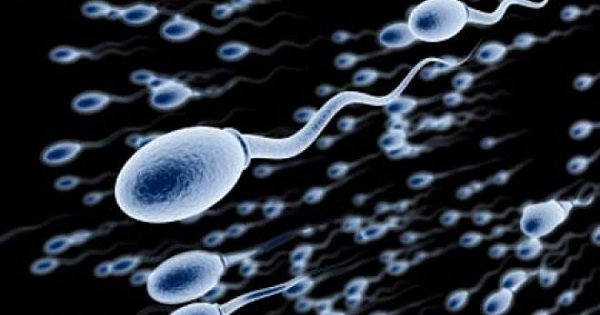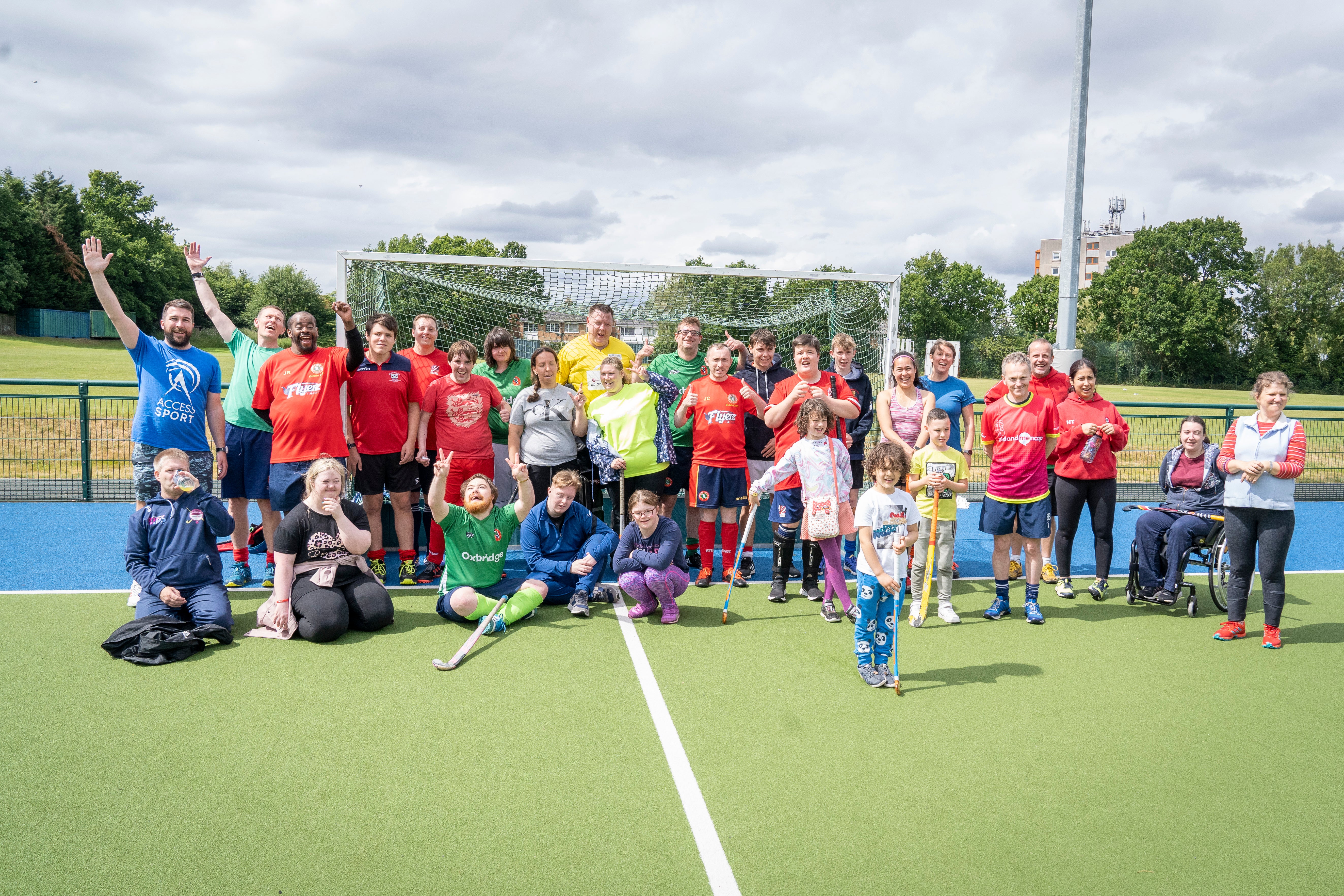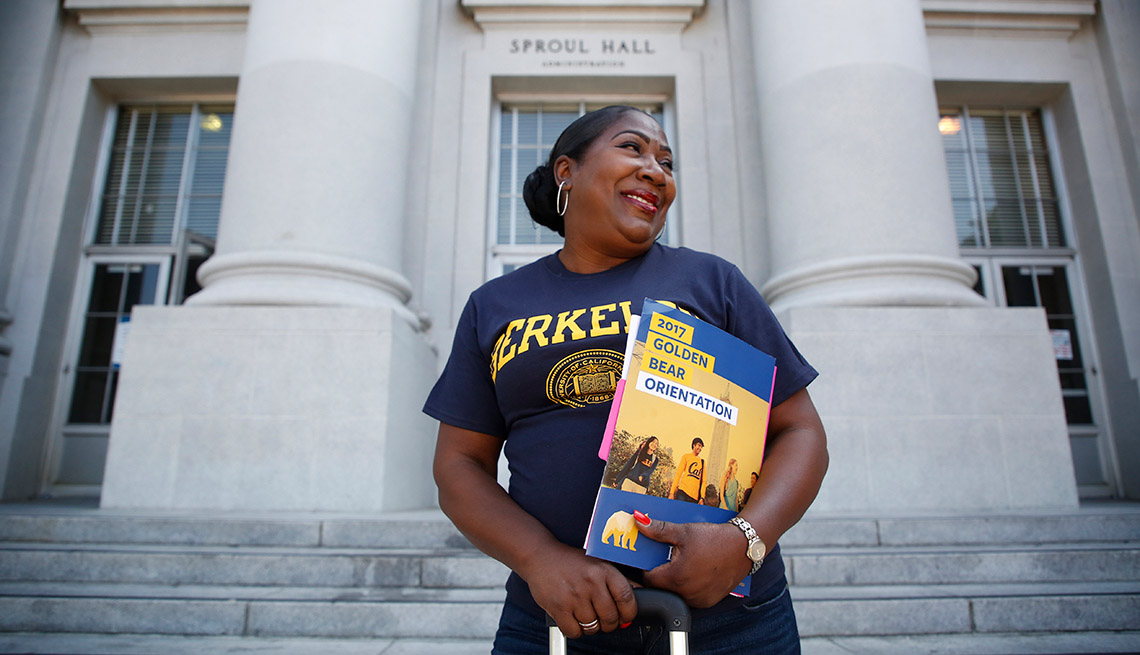
- Select a language for the TTS:
- UK English Female
- UK English Male
- US English Female
- US English Male
- Australian Female
- Australian Male
- Language selected: (auto detect) - EN
Play all audios:
ABSTRACT Competition between genetically identical organisms is considered insignificant in evolutionary theory because it is presumed to have little selective consequence. We argue that
competition between genetically identical cells could improve the fitness of a multicellular organism by directing fitter cells to the germ line or by eliminating unfit cells, and that
cell-competition mechanisms have been conserved in multicellular organisms. We propose that competition between genetically identical or highly similar units could have similar selective
advantages at higher organizational levels, such as societies. Access through your institution Buy or subscribe This is a preview of subscription content, access via your institution ACCESS
OPTIONS Access through your institution Subscribe to this journal Receive 12 print issues and online access $209.00 per year only $17.42 per issue Learn more Buy this article * Purchase on
SpringerLink * Instant access to full article PDF Buy now Prices may be subject to local taxes which are calculated during checkout ADDITIONAL ACCESS OPTIONS: * Log in * Learn about
institutional subscriptions * Read our FAQs * Contact customer support SIMILAR CONTENT BEING VIEWED BY OTHERS EVOLUTION OF BIOLOGICAL COOPERATION: AN ALGORITHMIC APPROACH Article Open access
17 January 2024 THE EVOLUTION OF MECHANISMS TO PRODUCE PHENOTYPIC HETEROGENEITY IN MICROORGANISMS Article Open access 25 January 2022 ANCESTRAL SOCIAL ENVIRONMENTS PLUS NONLINEAR BENEFITS
CAN EXPLAIN COOPERATION IN HUMAN SOCIETIES Article Open access 24 November 2022 REFERENCES * Hamilton, W. D. The genetical evolution of social behaviour. I. _J. Theor. Biol._ 7, 1–16 (1964).
Article CAS PubMed Google Scholar * Hamilton, W. D. The genetical evolution of social behaviour. II. _J. Theor. Biol._ 7, 17–52 (1964). Article CAS PubMed Google Scholar * Maynard
Smith, J. & Szathmary, E. _The Major Transitions in Evolution_ (Oxford Univ. Press, New York, 1995). Google Scholar * Michod, R. _Darwinian Dynamics_ (Princeton Univ. Press, Princeton,
New Jersey, 1999). Google Scholar * Shaulsky, G. & Loomis, W. F. Cell type regulation in response to expression of ricin A in _Dictyostelium_. _Dev. Biol._ 160, 85–98 (1993). Article
CAS PubMed Google Scholar * Greenwald, I. LIN-12/Notch signaling: lessons from worms and flies. _Genes Dev._ 12, 1751–1762 (1998). Article CAS PubMed Google Scholar * Rooke, J. E.
& Xu, T. Positive and negative signals between interacting cells for establishing neural fate. _Bioessays_ 20, 209–214 (1998). Article CAS PubMed Google Scholar * Lewis, J. Notch
signalling and the control of cell fate choices in vertebrates. _Semin. Cell Dev. Biol._ 9, 583–589 (1998). Article CAS PubMed Google Scholar * Morata, G. & Ripoll, P. Minutes:
mutants of _Drosophila_ autonomously affecting cell division rate. _Dev. Biol._ 42, 211–221 (1975). Article CAS PubMed Google Scholar * Lambertsson, A. The minute genes in _Drosophila_
and their molecular functions. _Adv. Genet._ 38, 69–134 (1998). Article CAS PubMed Google Scholar * Simpson, P. & Morata, G. Differential mitotic rates and patterns of growth in
compartments in the _Drosophila_ wing. _Dev. Biol._ 85, 299–308 (1981). Article CAS PubMed Google Scholar * Prober, D. A. & Edgar, B. A. Ras1 promotes cellular growth in the
_Drosophila_ wing. _Cell_ 100, 435–446 (2000). Article CAS PubMed Google Scholar * de la Cova, C., Abril, M., Bellosta, P., Gallant, P. & Johnston, L. A. _Drosophila_ Myc regulates
organ size by inducing cell competition. _Cell_ 117, 107–116 (2004). Article CAS PubMed Google Scholar * Moreno, E. & Basler, K. dMyc transforms cells into super-competitors. _Cell_
117, 117–129 (2004). Article CAS PubMed Google Scholar * Burke, R. & Basler, K. Dpp receptors are autonomously required for cell proliferation in the entire developing _Drosophila_
wing. _Development_ 122, 2261–2269 (1996). CAS PubMed Google Scholar * Johnston, L. A. & Sanders, A. L. Wingless promotes cell survival but constrains growth during _Drosophila_ wing
development. _Nature Cell Biol._ 5, 827–833 (2003). Article CAS PubMed Google Scholar * Abrams, J. M. Competition and compensation: coupled to death in development and cancer. _Cell_
110, 403–406 (2002). Article CAS PubMed Google Scholar * Milan, M. Survival of the fittest. Cell competition in the _Drosophila_ wing. _EMBO Rep._ 3, 724–725 (2002). Article CAS PubMed
PubMed Central Google Scholar * Moreno, E., Basler, K. & Morata, G. Cells compete for decapentaplegic survival factor to prevent apoptosis in _Drosophila_ wing development. _Nature_
416, 755–759 (2002). Article CAS PubMed Google Scholar * Oliver, E. R., Saunders, T. L., Tarle, S. A. & Glaser, T. Ribosomal protein L24 defect in belly spot and tail (_Bst_), a
mouse _Minute_. _Development_ 131, 3907–3920 (2004). Article CAS PubMed Google Scholar * Gallardo, M. H., Bickham, J. W., Honeycutt, R. L., Ojeda, R. A. & Kohler, N. Discovery of
tetraploidy in a mammal. _Nature_ 401, 341 (1999). Article CAS PubMed Google Scholar * Eakin, G. S. & Behringer, R. R. Tetraploid development in the mouse. _Dev. Dyn._ 228, 751–766
(2003). Article PubMed Google Scholar * Eakin, G. S., Hadjantonakis, A. K., Papaioannou, V. E. & Behringer, R. R. Developmental potential and behavior of tetraploid cells in the mouse
embryo. _Dev. Biol._ 288, 150–159 (2005). Article CAS PubMed Google Scholar * Heard, E., Clerc, P. & Avner, P. X-chromosome inactivation in mammals. _Annu. Rev. Genet._ 31, 571–610
(1997). Article CAS PubMed Google Scholar * Migeon, B. R. Non-random X chromosome inactivation in mammalian cells. _Cytogenet. Cell. Genet._ 80, 142–148 (1998). Article CAS PubMed
Google Scholar * Van den Veyver, I. B. Skewed X inactivation in X-linked disorders. _Semin. Reprod. Med._ 19, 183–191 (2001). Article CAS PubMed Google Scholar * Belmont, J. W. Genetic
control of X inactivation and processes leading to X-inactivation skewing. _Am. J. Hum. Genet._ 58, 1101–1108 (1996). CAS PubMed PubMed Central Google Scholar * Conley, M. E. et al.
Expression of the gene defect in X-linked agammaglobulinemia. _N. Engl. J. Med._ 315, 564–567 (1986). Article CAS PubMed Google Scholar * Fearon, E. R., Winkelstein, J. A., Civin, C. I.,
Pardoll, D. M. & Vogelstein, B. Carrier detection in X-linked agammaglobulinemia by analysis of X-chromosome inactivation. _N. Engl. J. Med._ 316, 427–431 (1987). Article CAS PubMed
Google Scholar * Puck, J. M., Nussbaum, R. L. & Conley, M. E. Carrier detection in X-linked severe combined immunodeficiency based on patterns of X chromosome inactivation. _J. Clin.
Invest._ 79, 1395–1400 (1987). Article CAS PubMed PubMed Central Google Scholar * Fearon, E. R., Kohn, D. B., Winkelstein, J. A., Vogelstein, B. & Blaese, R. M. Carrier detection in
the Wiskott Aldrich syndrome. _Blood_ 72, 1735–1739 (1988). CAS PubMed Google Scholar * Greer, W. L. et al. X-chromosome inactivation in the Wiskott–Aldrich syndrome: a marker for
detection of the carrier state and identification of cell lineages expressing the gene defect. _Genomics_ 4, 60–67 (1989). Article CAS PubMed Google Scholar * Parrish, J. E., Scheuerle,
A. E., Lewis, R. A., Levy, M. L. & Nelson, D. L. Selection against mutant alleles in blood leukocytes is a consistent feature in incontinentia pigmenti type 2. _Hum. Mol. Genet._ 5,
1777–1783 (1996). Article CAS PubMed Google Scholar * Wengler, G., Gorlin, J. B., Williamson, J. M., Rosen, F. S. & Bing, D. H. Nonrandom inactivation of the X chromosome in early
lineage hematopoietic cells in carriers of Wiskott–Aldrich syndrome. _Blood_ 85, 2471–2477 (1995). CAS PubMed Google Scholar * Parolini, O. et al. X-linked Wiskott–Aldrich syndrome in a
girl. _N. Engl. J. Med._ 338, 291–295 (1998). Article CAS PubMed Google Scholar * Ellermeier, C. D., Hobbs, E. C., Gonzalez-Pastor, J. E. & Losick, R. A three-protein signaling
pathway governing immunity to a bacterial cannibalism toxin. _Cell_ 124, 549–559 (2006). Article CAS PubMed Google Scholar * Gonzalez-Pastor, J. E., Hobbs, E. C. & Losick, R.
Cannibalism by sporulating bacteria. _Science_ 301, 510–513 (2003). Article CAS PubMed Google Scholar * Loomis, W. F. Dictyostelium discoideum. _A Developmental System_ (Academic Press,
New York, 1975). Google Scholar * Kessin, R. H. Dictyostelium _— Evolution, Cell Biology, and the Development of Multicellularity_ (Cambridge Univ. Press, Cambridge, UK, 2001). Book Google
Scholar * Leach, C. K., Ashworth, J. M. & Garrod, D. R. Cell sorting out during the differentiation of mixtures of metabolically distinct populations of _Dictyostelium discoideum_. _J.
Embryol. Exp. Morphol._ 29, 647–661 (1973). CAS PubMed Google Scholar * Tasaka, M. & Takeuchi, I. Role of cell sorting in pattern formation in _Dictyostelium discoideum_.
_Differentiation_ 18, 191–196 (1981). Article CAS PubMed Google Scholar * Thompson, C. R. & Kay, R. R. Cell-fate choice in _Dictyostelium_: intrinsic biases modulate sensitivity to
DIF signaling. _Dev. Biol._ 227, 56–64 (2000). Article CAS PubMed Google Scholar * Blaschke, A., Weijer, C. & MacWilliams, H. _Dictyostelium discoideum_: Cell-type proportioning,
cell-differentiation preference, cell fate, and the behavior of anterior-like cells in Hs1/Hs2 and G+/G− mixtures. _Differentiation_ 32, 1–9 (1986). Article Google Scholar * McDonald, S.
A. & Durston, A. J. The cell cycle and sorting behaviour in _Dictyostelium discoideum_. _J. Cell Sci._ 66, 195–204 (1984). CAS PubMed Google Scholar * Araki, T., Nakao, H., Takeuchi,
I. & Maeda, Y. Cell-cycle-dependent sorting in the development of _Dictyostelium_ cells. _Dev. Biol._ 162, 221–228 (1994). Article CAS PubMed Google Scholar * Weijer, C. J., Duschl,
G. & David, C. N. Dependence of cell-type proportioning and sorting on cell cycle phase in _Dictyostelium discoideum_. _J. Cell Sci._ 70, 133–145 (1984). CAS PubMed Google Scholar *
Strassmann, J. E., Zhu, Y. & Queller, D. C. Altruism and social cheating in the social amoeba _Dictyostelium discoideum_. _Nature_ 408, 965–967 (2000). Article CAS PubMed Google
Scholar * Laird, D. J., De Tomaso, A. W. & Weissman, I. L. Stem cells are units of natural selection in a colonial ascidian. _Cell_ 123, 1351–1360 (2005). Article CAS PubMed Google
Scholar * De Tomaso, A. W. et al. Isolation and characterization of a protochordate histocompatibility locus. _Nature_ 438, 454–459 (2005). Article CAS PubMed PubMed Central Google
Scholar * Stoner, D. S. & Weissman, I. L. Somatic and germ cell parasitism in a colonial ascidian: possible role for a highly polymorphic allorecognition system. _Proc. Natl Acad. Sci.
USA_ 93, 15254–15259 (1996). Article CAS PubMed PubMed Central Google Scholar * Stoner, D. S., Rinkevich, B. & Weissman, I. L. Heritable germ and somatic cell lineage competitions
in chimeric colonial protochordates. _Proc. Natl Acad. Sci. USA_ 96, 9148–9153 (1999). Article CAS PubMed PubMed Central Google Scholar * Extavour, C. G. & Akam, M. Mechanisms of
germ cell specification across the metazoans: epigenesis and preformation. _Development_ 130, 5869–5884 (2003). Article CAS PubMed Google Scholar * Buss, L. W. Evolution, development,
and the units of selection. _Proc. Natl Acad. Sci. USA_ 80, 1387–1391 (1983). Article CAS PubMed PubMed Central Google Scholar * Johnson, J. et al. Oocyte generation in adult mammalian
ovaries by putative germ cells in bone marrow and peripheral blood. _Cell_ 122, 303–315 (2005). Article CAS PubMed Google Scholar * Miyata, H. & Miyata, M. Mode of conjugation in
homothallic cells of _Schizosaccharomyces pombe_. _J. Gen. Appl. Microbiol._ 27, 365–371 (1981). Article Google Scholar * Klar, A. J. Differentiated parental DNA strands confer
developmental asymmetry on daughter cells in fission yeast. _Nature_ 326, 466–470 (1987). Article CAS PubMed Google Scholar * Klar, A. J. The developmental fate of fission yeast cells is
determined by the pattern of inheritance of parental and grandparental DNA strands. _EMBO J._ 9, 1407–1415 (1990). Article CAS PubMed PubMed Central Google Scholar * Lark, K. G.
Nonrandom segregation of sister chromatids in _Vicia faba_ and _Triticum boeoticum_. _Proc. Natl Acad. Sci. USA_ 58, 352–359 (1967). Article CAS PubMed PubMed Central Google Scholar *
Rosenberger, R. F. & Kessel, M. Nonrandom sister chromatid segregation and nuclear migration in hyphae of _Aspergillus nidulans_. _J. Bacteriol._ 96, 1208–1213 (1968). CAS PubMed
PubMed Central Google Scholar * Lark, K. G., Consigli, R. A. & Minocha, H. C. Segregation of sister chromatids in mammalian cells. _Science_ 154, 1202–1205 (1966). Article CAS PubMed
Google Scholar * Potten, C. S., Hume, W. J., Reid, P. & Cairns, J. The segregation of DNA in epithelial stem cells. _Cell_ 15, 899–906 (1978). Article CAS PubMed Google Scholar *
Potten, C. S., Owen, G. & Booth, D. Intestinal stem cells protect their genome by selective segregation of template DNA strands. _J. Cell Sci._ 115, 2381–2388 (2002). CAS PubMed Google
Scholar * Merok, J. R., Lansita, J. A., Tunstead, J. R. & Sherley, J. L. Cosegregation of chromosomes containing immortal DNA strands in cells that cycle with asymmetric stem cell
kinetics. _Cancer Res._ 62, 6791–6795 (2002). CAS PubMed Google Scholar * Karpowicz, P. et al. Support for the immortal strand hypothesis: neural stem cells partition DNA asymmetrically
_in vitro_. _J. Cell Biol._ 170, 721–732 (2005). Article CAS PubMed PubMed Central Google Scholar * Kaykov, A. & Arcangioli, B. A programmed strand-specific and modified nick in _S.
pombe_ constitutes a novel type of chromosomal imprint. _Curr. Biol._ 14, 1924–1928 (2004). Article CAS PubMed Google Scholar * Vengrova, S. & Dalgaard, J. Z. RNase-sensitive DNA
modification(s) initiates _S. pombe_ mating-type switching. _Genes Dev._ 18, 794–804 (2004). Article CAS PubMed PubMed Central Google Scholar * Cairns, J. Mutation selection and the
natural history of cancer. _Nature_ 255, 197–200 (1975). Article CAS PubMed Google Scholar * Armakolas, A. & Klar, A. J. Cell type regulates selective segregation of mouse chromosome
7 DNA strands in mitosis. _Science_ 311, 1146–1149 (2006). Article CAS PubMed Google Scholar * Frank, S. A. Mutual policing and repression of competition in the evolution of cooperative
groups. _Nature_ 377, 520–522 (1995). Article CAS PubMed Google Scholar * Jacob, F. Evolution and tinkering. _Science_ 196, 1161–1166 (1977). Article CAS PubMed Google Scholar
Download references ACKNOWLEDGEMENTS We thank D. Queller, L. Santorelli, A. Kuspa and B. Loomis for critical review of this manuscript and for helpful discussions. We thank Z. Pancer, J.
Strassmann and N. Boerkoel for enlightening discussions. This work has been supported by a FIBR (Frontiers in Integrative Biological Research) grant from the US National Science Foundation.
AUTHOR INFORMATION AUTHORS AND AFFILIATIONS * Department of Molecular and Human Genetics, Baylor College of Medicine, One Baylor Plaza, Houston, 77030, Texas, USA Anupama Khare & Gad
Shaulsky Authors * Anupama Khare View author publications You can also search for this author inPubMed Google Scholar * Gad Shaulsky View author publications You can also search for this
author inPubMed Google Scholar CORRESPONDING AUTHOR Correspondence to Gad Shaulsky. ETHICS DECLARATIONS COMPETING INTERESTS The authors declare no competing financial interests. RELATED
LINKS RELATED LINKS DATABASES OMIM incontinentia pigmenti type 2 Wiskott–Aldrich syndrome X-linked agammaglobulinaemia X-linked severe combined immunodeficiency FURTHER INFORMATION Gad
Shaulsky's homepage RIGHTS AND PERMISSIONS Reprints and permissions ABOUT THIS ARTICLE CITE THIS ARTICLE Khare, A., Shaulsky, G. First among equals: competition between genetically
identical cells. _Nat Rev Genet_ 7, 577–583 (2006). https://doi.org/10.1038/nrg1875 Download citation * Published: 16 May 2006 * Issue Date: 01 July 2006 * DOI:
https://doi.org/10.1038/nrg1875 SHARE THIS ARTICLE Anyone you share the following link with will be able to read this content: Get shareable link Sorry, a shareable link is not currently
available for this article. Copy to clipboard Provided by the Springer Nature SharedIt content-sharing initiative








